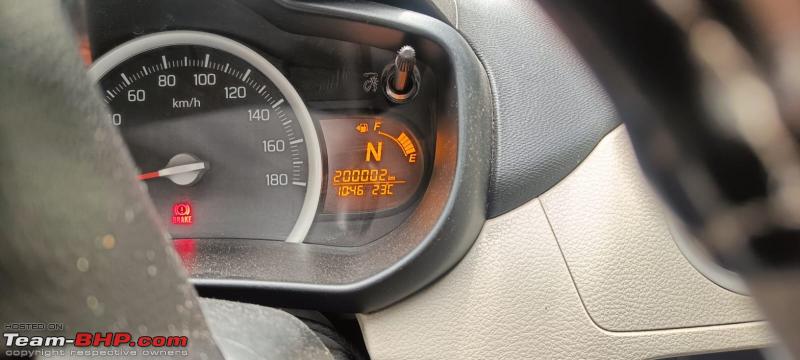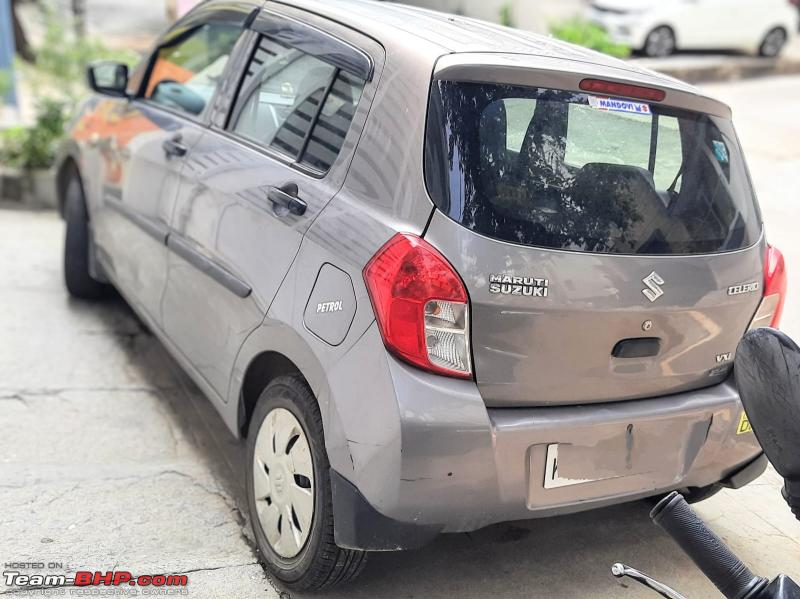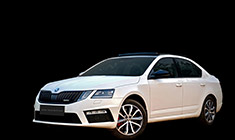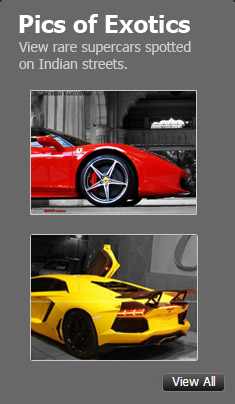News
How my 2015 Celerio has contributed to the Indian automotive industry
With over 2,00,000 km on the odometer, this car has traveled across most of Maharashtra, Tamil Nadu, Andhra Pradesh, Telangana, Kerala, and Madhya Pradesh.
BHPian abhiijithbhatn recently shared this with other enthusiasts:
This post is going to be a bit lengthy, mixing my journey with Celerio, personal milestones, and its impact.

In October 2019, due to some personal issues, I had to sell my beloved Hyundai Accent CRDI and the comfortable Mahindra Xylo E8. I ended up purchasing a pre-owned Celerio, which had already crossed the 1,05,000 km mark. At the time, I was dealing with a recurring slip disc, planning an AI start-up, and living 40 km away from Bangalore’s IT hub. I needed a small, automatic car that wouldn’t aggravate my back issues and fit within my budget. The Celerio AMT checked all the boxes.
For the first few months, the car saw little to no use as I transitioned from working on an AI-based start-up to reviving my father’s small business, which had been limping along since 2006 after his passing. Somehow, there was this gut feeling that by incorporating new technology, we could help the Indian manufacturing sector. My partner and I took the plunge, building a Mech-Tech startup focused on developing high-precision probes (sensors) for computer-controlled machines.
Both of us were IT professionals and had no background in the manufacturing sector—no experience, no connections, no clue how it even worked. But in January 2020, we jumped in full-time, following the typical IT playbook: digital marketing strategies, emails, a website, and presentation decks. We started cold-calling customers, trying to get them on video calls to explain our product offerings—zero success.
We thought maybe participating in a trade show in Ludhiana, Punjab would work, expecting to sell 100 units in two days by offering deep discounts (like OLA’s strategy). We sold two—again, no success.
Then came the series of Covid lockdowns:
• Covid Phase 1: No business—no success.
• Covid Phase 2: We were burning through our savings. Our sales and R&D hires started taking advantage of us, exploiting our trust. For example, we'd send someone to the Pune-Bhosari area, but they’d visit only two companies a day, blaming long travel times between them. Naively, we believed them because we weren’t visiting customers ourselves, too tied up in virtual meetings. By this time, company visits were restricted due to Covid fears. We ramped the team to six, but in the end, only retained one—no success.
• Covid Phase 3: As Phase 2 opened up, we finally connected with good industry people through LinkedIn and other references. They gave us valuable insights on sales, marketing, and networking. Our fear of Covid had lessened, but now the fear of economic survival loomed larger. So, we started traveling to manufacturing hubs like Pune, Mumbai, Rajkot, and Kolhapur for face-to-face meetings. We relied on public transport—buses, flights—and gained some perspective on how the B2B manufacturing world operates. Yet, still no profitable sales.
It became obvious: unless we physically met customers, no profitable business was coming. While Bangalore is an important market for our products, very few people gave us entry or showed interest. The business lesson: We needed to be where customers were willing to pay. By this time, it was just the two founders and one R&D engineer. Our travel and accommodation expenses were rising, so we cut costs by renting an RK in Pune. But the bigger question was, how to reduce travel costs?
Enter Celerio. Enter Success.
Maharashtra was an early adopter of CNG, and our broker advised that CNG was much cheaper than petrol bike. So, in November 2021, with the car at 1,18,000 km, I installed a Lovato CNG kit. With Pune as our base, we started visiting clients in Mumbai, Aurangabad, Nashik, Surat, Ahmedabad, Rajkot, and Jamnagar. The Celerio, my partner, and I took the front seats, with two large suitcases and products packed in the back. Now, with over 2,00,000 km on the odometer, this car has traveled across most of Maharashtra, Tamil Nadu, Andhra Pradesh, Telangana, Kerala, and Madhya Pradesh. And this was the beginning of our success.
What Makes the Celerio Great:
1. Seats and Seating Position: I had back pain in the Accent after 200 km and stomach cramps in the Xylo after 500 km. With the Celerio, I once drove 32 hours non-stop from Bangalore to Gandhinagar, with just a 4-hour sleep break at a petrol bunk, covering 1600 km—and still felt fresh upon reaching the hotel! A 1000 km drive to Pune is common now. Even my employees find the seating comfortable, including the backseat. At first, the seats don’t feel cushioned, but they don't cave in after long distances like other cars, which makes them perfect for extended trips. No Rattles.
2. Maintenance: I used to spend 7-10k every 5k km on services for my older cars. With the Celerio (thanks to a great ex-Maruti mechanic), I haven’t spent more than 1 lakh so far, including half-engine work at 188k km, clutch and driveshaft changes, 8 Yokohama Earth 1 tires, routine oil changes at 10k intervals, and air/cabin filter changes every 5k km.
3. Mileage: On petrol—14 KMPL in the city, 20 KMPL on highways. On CNG—18 KMPL in the city, 28 KMPL on highways, and a best of 35 KMPL without AC.
4. Handling: With Yokohama tires, the Celerio glides silently. I’ve taken it through ghats, gracefully cornering while cars behind either understeered or oversteered.
5. AMT: In over 2 lakh km, only two clutch changes. The current clutch has another 20-30k km of life, according to my mechanic. I often use manual mode when driving aggressively, and I suspect the AMT might even be better than I am at manual shifting. I find other transmissions like CVT or even DCT which now a days tuned for reliability dont give the initial boost, making them less exciting compared to my AMT.
6. Service Center: No matter where I go, the nearest service center is just a town away, with easily available spares.
7. Parking: Its dimensions and drivability are perfect for city traffic and tight parking spaces.
________________________________________
Areas That Could Be Improved:
1. Airbags, Safety: My Celerio doesn’t have airbags. We once had an accident on a three-lane road when a truck suddenly swerved and hit us. We were pulled over a guardrail and back onto the road. Thankfully, we weren’t hurt, but the repair bill almost totaled the car. After negotiating with the Maruti service center, the final bill was around 2 lakhs, and I had to pay 70k out of pocket due to depreciation.
2. Boot Space: The 65L CNG tank takes up most of the boot space. Even fitting a cabin suitcase requires putting it in through the backseat.
3. Engine Power: The engine feels underpowered. The Hyundai Santro feels peppier. An extra 10 HP or the Swift’s 1.2 engine would’ve been perfect.
4. Seatbelt: The seatbelt’s fixed position is uncomfortable for shorter people (below 5’3”), as it rubs against their neck.
5. Storage: The car could definitely use more storage space.
6. Steering Centering: Even after multiple visits to service centers and experts, the steering refuses to self-center.
7. Clutch Warning: The clutch warning buzzer is the bane of slow traffic. It’s more effective than water torture for extracting confessions!
________________________________________
What’s Horrible:
1. Wiper Blades: They barely last three months before making annoying noises.
2. Cabin Noise: While the engine purrs beautifully, the cabin does a terrible job at blocking out tire and road noise, making it hard to take calls on speaker.
________________________________________
So what is Celerio’s Contribution to the Indian Automotive Industry
As I mentioned earlier, my company manufactures high-precision probes for computer-controlled machines, extensively used in die molds for injection molding, press components, PDC, and machining centers for steel and aluminum casting. My customers are tier 1, 2, and 3 suppliers to most Indian automotive, agriculture, commercial OEMs, with some even exporting globally. Over the last three years, my customers have significantly benefited from our products producing high precision jobs.
Today, my company is 21 people strong, growing in double digits year-on-year, and none of this would’ve been possible without my humble reliable, cost effective, super comfortable Celerio which pushed us to go far places, do more client visits and meet amazing people and also view some scenic beautiful spots in remote spots in India.

Check out BHPian comments for more insights and information.



















